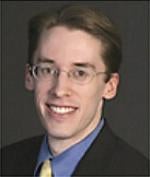Natural Resources Defense Council v. USEPA: Court Rejects USEPA’S Approach to PM2.5 NAAQS Implementation
Recently, the Circuit Court for the District of Columbia rejected the United States Environmental Protection Agency’s (USEPA’s) 2007 and 2008 rules implementing the 1997 national ambient air quality standard (NAAQS) for fine particulate matter having a diameter equal or less than 2.5 micrometers (PM2.5). The court held that USEPA erred by promulgating the PM2.5 implementation rules pursuant to the general nonattainment area implementation provisions for NAAQS found in Title 1, Part D, Subpart 1 of the Clean Air Act, rather than the stricter particulate matter-specific nonattainment area implementation provisions for NAAQS found in Subpart 4. The two rules were remanded back to USEPA for promulgation consistent with Subpart 4. The decision results in uncertainty for sources located in PM2.5 nonattainment areas.
The Clean Air Act includes several provisions governing state implementation plan (SIP) requirements for areas that are not in attainment with NAAQS. This includes Subpart 1, which was adopted in 1977 and governs the requirements for SIPs for “Nonattainment Areas in General.” It also includes Subpart 4, which was adopted in 1990 and governs SIP requirements for “Particulate Matter Nonattainment Areas.” When USEPA promulgated its 2007 rule regarding general SIP requirements for PM2.5 and its 2008 rule regarding PM2.5 New Source Review implementation requirements, it followed the provisions in Subpart 1 rather than the provisions in Subpart 4. Several citizens groups challenged this action and filed a petition arguing that USEPA’s decision to use Subpart 1 requirements rather than Subpart 4 requirements was unlawful. In response, USEPA argued that Congress intended for Subpart 4 to address only PM10 NAAQS. In support of this argument, USEPA pointed out that Subpart 4 includes several references to PM10, but does not include references to PM2.5 or particulate matter generally. In addition, the PM2.5 NAAQS was not promulgated until 1997, after Subpart 4 was adopted.
The court disagreed with the USEPA’s interpretation. The court relied on the Supreme Court’s decision in Whitman v. American Trucking Association, 531 U.S. 457 (2001), where the Court held that new ozone NAAQS should be implemented pursuant to Subpart 2’s ozone-specific provisions, rather than Subpart 1’s general nonattainment area provisions. The court pointed out that the definition of PM10 includes all particulate matter with a diameter of 10 micrometers or less and, therefore, includes PM2.5. The court also noted that the purpose of the 1990 addition of Subpart 4 was to limit the broad implementation discretion that was given to USEPA in Subpart 1. Relaxing Subpart 4’s more stringent and nondiscretionary requirements when implementing the PM2.5 standard would be inconsistent with Congress’ intent. Accordingly, the court concluded that USEPA’s PM2.5 implementation rules, promulgated pursuant to Subpart 1, were inconsistent with Congress’s express intent.
As a result of this decision, states will face revised SIP requirements for PM2.5 nonattainment areas. Subpart 4 includes several requirements that are more stringent than Subpart 1. For example, it is easier for a nonattainment area to be reclassified from “moderate” to “serious” nonattainment under Subpart 4. In addition, there is less flexibility under Subpart 4 to extend attainment dates. Subpart 4 also imposes mandatory pollutant reduction requirements for failure to come into attainment in a timely manner, while Subpart 1 does not. Finally, Subpart 4 includes greater control measure requirements and tighter deadlines for implementing control measures compared to Subpart 1. Note: the more specific and stringent requirements in Subpart 4 will apply not only to the implementation of the 1997 PM2.5 standard, it will also apply to implementation of the stricter PM2.5 standards USEPA promulgated in 2006 (for which the implementation process has already begun) and 2012.
USEPA is currently reviewing the court’s decision and has not indicated a timeframe for promulgating the new PM2.5 implementation rules. The court, meanwhile, has not vacated the two implementation rules pending USEPA’s revision. This decision casts uncertainty upon sources located in areas classified as nonattainment under the 1997 or 2006 PM2.5 NAAQS. USEPA has said that it is assessing the effect of this decision on pending SIP-related actions, such as nonattainment area submittals for the 2006 PM2.5 NAAQS. It is also assessing the impact of the decision on pending NSR actions in PM2.5 nonattainment areas under the 1997 and 2006 standards.
Sierra Club V. USEPA: Court Vacates SIL and SMC PM2.5 PSD Regulations
On January 22, 2013, the Circuit Court for the District of Columbia vacated and remanded certain portions of the PM2.5 Prevention of Significant Deterioration (PSD) implementing regulations promulgated on October 10, 2010. These regulations allowed PSD construction permit applicants to use a Significant Impact Level (SIL) and a Significant Monitoring Concentration (SMC) for PM2.5 in order to gain exemptions from permitting authorities for certain air quality analysis and monitoring otherwise required under statute. Specifically, if the applicant projected air quality impacts less than the corresponding SIL, the applicant could be granted an exemption from performing more comprehensive modeling analysis otherwise required under Clean Air Act (CAA) § 165. In addition, if an applicant predicted that the source’s impact would be less than the SMC, the source could be granted an exemption from the PSD preconstruction monitoring requirement, also found in CAA § 165.
The court vacated and remanded most of the SIL provisions in the rule for further consideration by USEPA. USEPA, the court explained, could not grant permitting authorities the ability to automatically exempt sources with projected impacts below the SIL from a more comprehensive air quality analysis when such an analysis is required under the CAA. Notably, the court refrained from ruling on whether USEPA had the authority to establish the PM2.5 SIL in the first place, thereby maintaining the regulatory provision codifying the PM2.5 SIL (40 C.F.R. § 51.165(b)(2)). For the SMC challenge, the court completely vacated the portions of the rule establishing a PM2.5 SMC and the related preconstruction air monitoring exemption. The court held that USEPA does not have the authority to promulgate an SMC for PM2.5 that would allow a permitting authority to exempt a permit applicant from undertaking the preconstruction air monitoring requirement located in § 165(e)(2) of the Clean Air Act.
Notably, USEPA tried to rely on the court’s opinion in Alabama Power Co. v. Costle, 636 F.2d 323 (D.C. Cir. 1979), to support the argument that agencies have the inherent authority to establish de minimis thresholds to provide exemptions, such as the PM2.5 SIL and SMC regulations. However, the court noted that an agency does not have this authority in areas where “Congress has been extraordinarily rigid.” The court held that § 165 of the CAA is “extraordinarily rigid” and, accordingly, USEPA does not have the authority to provide exemptions to this section’s requirements.
Under this decision, unless reversed, sources will not be able to take advantage of the SIL and SMC exemptions in the PM2.5 PSD rule. Rather, permit applicants will have to comply with comprehensive air quality modeling analysis and preconstruction monitoring as previously required, in accordance with § 165 of the CAA.
Supreme Court Denies Certiorari for Challenge to One-Hour SO2 Rule
On January 22, 2013, the United States Supreme Court declined to grant a petition for writ of certiorari to parties challenging an appellate court decision upholding USEPA’s one-hour SO2 standard. USEPA promulgated the SO2 standard of 75 parts per billion averaged over an hour on June 22, 2010. Several states, industry groups and individual companies challenged the rule in the U.S. Court of Appeals for the District of Columbia, arguing that USEPA improperly weighed certain health-related data when establishing the standard. The appellate court held in favor of USEPA, concluding that the agency had acted reasonably in setting the one-hour SO2 standard. Several parties sought Supreme Court review of the appellate court decision. However, the Supreme Court refused to hear the challenge. The Supreme Court issued its refusal without any comment. The Court’s action effectively ends this challenge to the one-hour SO2 rule.
Court Refuses to Grant Rehearing of Cross-State Air Pollution Rule (CSAPR) Challenge
On January 24, 2013, the U.S. Court of Appeals for the District of Columbia declined to rehear its decision to vacate USEPA’s Cross State Air Pollution Rule (CSAPR). A group of seven judges at the court of appeals and the original three-judge panel both denied a rehearing.
On August 21, 2012, the appellate court issued a decision vacating the CSAPR on the grounds that the rule exceeded USEPA’s statutory authority by (1) requiring certain upwind states to reduce emissions by more than their own significant contributions to a downwind state’s nonattainment and (2) by imposing Federal Implementation Plans upon states without allowing the states an initial opportunity to develop State Implementation Plans. In light of the vacature of the CSAPR, USEPA, at the direction of the circuit court, has been administering the Clean Air Interstate Rule (CAIR) pending the promulgation of a valid replacement to that rule.
The last method of challenge to the CSAPR left for USEPA to pursue is review by the Supreme Court. USEPA has 90 days from the date of the denial of rehearing to file a petition for a writ of certiorari with the Supreme Court. USEPA has not yet indicated whether it intends to file such an appeal.



 />i
/>i

